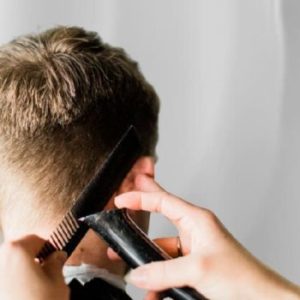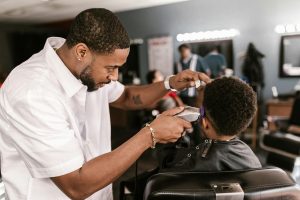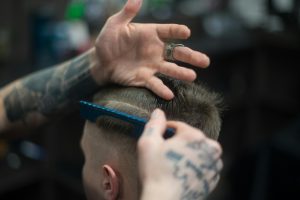Men salon
A small hair men salon in a Southern California suburb, to explore how men’s hair salon clients make sense of their participation in beauty work. I discovered that guys at Shear Style empty splendor paintings of its affiliation with feminized aesthetics and as an alternative assemble it as an exercise vital for them to encompass a class primarily based totally masculinity.

But as the quote at the opening of this article suggests, not all men salon can participate in the beauty industry. Instead, it is men who have enough disposable income, all the money who can buy beauty work and beauty products or grooming products as they are often referred to as men who promise to deliver aesthetics compatible with social standards. The styling preference for sleek and high-grade hair among Shear Style males reinforces an ideal of masculine whiteness, one specifically associated with professionalism.
The work performed by these male beautifiers constitutes a form of difference that would distinguish them as masculine in opposition to white working-class men on the one hand but distinguishes them against the feminized character of women’s hairdressers on the other. That is, men salon variations alongside the strains of race, class, and gender are concurrently skilled and rendered as everyday and herbal methods of organizing social life. The body is often a central mechanism through which people appropriate, perform, and negotiate differences.
The garments we wear, the manner we fashion our hair, and how we walk, talk, and gesture are all tied up with doing differences. They adorned and styled their bodies according to the ideal notions of working and middle-class concepts of beauty.
The men salon who were for the most part white- who worked in middle-class men-only clubs focused on a body ideal, which was, tan and slight, long, blonde hair with breast implants under which to drape and under which to silhouette their eyes. The girls of color and white girls in working-elegance golf equipment regularly had extra strong figures, wore much less clothing, and used make-up to intensify their lips. In these clubs, beauty was defined in terms relative to the expectations of the male customers.
As a result, the ladies got here to encompass raced and classed femininities evoking exclusive quantities of cultural and academic capital. The beauty industry produces services and products with which women groom their bodies according to social expectations of race, class, and sexualized femininities. The hair salon is a key space in the perpetuation of women’s body projects. Hair is a social image that permits human beings to companion themselves with others alongside the traces of race, class, gender, sexuality, and age.
 The Hair Salon as a Gendered Space for Women
The Hair Salon as a Gendered Space for Women
Feminist scholars interested in hair salons are often interested in shifting the analytic focus away from masculine representations of the world and refocusing on the everyday experiences of women. These scholars understand the men salon as part of a broader women’s culture in which women shape their perceptions of self and body, form relationships and social networks, engage in informal therapy, create entrepreneurial opportunities, resist dominant racist frames, and produce representations of femininity mediated through class, race, relationships and social networks, resist frames, age.
One way women accomplish difference and participate in the naturalizing of social arrangements is by purchasing beauty work in the men salon. The hair salon is a space in which women create bonds and form friendships with each other. These relationships emerge out of women’s talk and touch, which are both implicated in the care work performed by women beauty workers. This emotional labor, however, often is not read by customers as work. The reason is twofold.
People feel relationships are less authentic if mediated by economic exchange since this labor is already gendered, it comes to be seen as an intrinsic part of women’s characters as something they are rather than something they do. The hair men salon is one of the spaces in which women shape their bodies and relationships with others in ways that mark them as members of specific social classes. Because we have imputed such practices and the men salon itself as quintessentially female, the men salon is an area to which males rarely or never go. In that sense, the men salon both reflects and reinforces divisions along gender, ethnicity, and class lines.
From the Laboring Body to the Flannel Suit to the Well-coiffed Man
Masculinities would be defined, during the Fordist era of industrial production, by how well men salon could do strenuous work. Well, this same pattern continues today as battered and battered men are more manly and therefore more worthy socially in most working-class milieuxes and workplaces. For the working class, the blood and sweat of men are the external indications of the successful performance of masculinity. However, postwar America between 1945 and 1960 was a time of rapid economic growth, which was accompanied by corporations and an exponential increase in white-collar jobs.
At the same time that men’s identities continued to be bound up with their jobs, opportunities for intellectual work grew. Many middle-magnificence white guys flooded into corporations, buying and selling their denim painting jumpers for gray flannel suits. It is no longer enough for some men to work hard, they must also look good. In their discussion of the metrosexual man, Salzman, Matathia, and O’Reilly describe how occupation ties in with looks. In 2003, an American male survey revealed that 89 percent believed grooming to be important for business. At the same time, despite men reportedly needing businessmen to groom themselves, and consequently, look great, there exists hardly any empirical research on male beauty practices.
 THE SALON
THE SALON
The context of Shear Style is important to an understanding of what it means for men to enter the gendered space of the women’s hair salon. Shear Style is a feminized area marked via way of means of purple walls, clean flowers, and normal cookie samplers. The men at the salon transgress gender boundaries and risk feminization to enter the salon and get their hair cut there. Of the 15 men I interviewed, eleven followed their hairstylists from a prior salon to Shear Style.
With its white walls and clean lines, the atmosphere of the previous men salon is much more androgynous, and, in contrast, Shear’s Style is understood by the men as feminine. The men are acutely aware that they are outnumbered in this gendered space, saying that they seldom see other men in the salon. Hamilton, a 57- 57-year-old white investment manager, points to the women around him as he describes his aversion to the salon, It’s jammed full of housewives, and bimbos are walking around chatting. Hamilton trivializes the salon and the practice of beauty work in the salon by linking it with bimbos and housewives.
The pink walls, the throw pillows on the waiting bench, fresh weekly flowers, and cookie samplers further feminize the salon in the eyes of the men. Neil, a 43-year-old white engineer, describes the salon as a fairly feminine atmosphere.
MEN’S MOTIVATIONS FOR VISIT THE HAIR SALON
Three themes emerged from this study that help us understand why the men at Shear Style purchase beauty work in a women’s hair salon. Because they like the salon as a place of leisure, luxury, pampering, beauty, glooming For the personalized relationships they feel they form with their women stylists, and To get a fashionable haircut they conflate with white professional-class aesthetics.
As I examine these themes in turn, what becomes clear is the picture of how the men at Shear Style understand the men salon as a place important to the appropriation of a white professional class embodiment, how they contrast the salon and barbershop to differentiate themselves from white working-class masculinity, and how they resist feminization while transgressing gender boundaries.
Personalized Relationships and Gendered Care Work
The relationships the men have with their stylists involve touch and the sharing of personal information. Many of the men at Shear Style have become attached and loyal to their stylists at least partially due to the relationship they believe they share.
A Stylish and Classed Haircut The guys at Shear Style additionally set themselves aside as participants of a specific magnificence by describing men salon hair care as vital to the accomplishment of an elegant white professional-magnificence embodiment. They conflate salon hair care with stylish, customized, and contemporary haircuts. For example, Mack notes, want something a little more stylish, leisure, luxury, pampering, beauty, glooming.
I’ll come to the salon because the salon develops more current styles and different techniques more relevant. The men perceive the salon as a place in which they can buy the latest trend in hair, and they attribute the ability to reproduce this style to the female hairstylists whom they state are of a high taste level and highly competent. The men feel secure with their stylists and find comfort in knowing that each visit will yield a good haircut.

CONCLUSION
They have indicated that they need to pay for the beauty work of the salon hairstylists to perfectly represent and execute a particular classed whiteness. So, their salon hair care practices do not strip away the masculine identity their fashionable hair marks their professional position, differentiating them from working-class white males.
The men salon use taste and priorities to describe themselves as different from the mechanic and the Grease monkey whom they claim are the typical clients of the barbershop. The men disdain the barbershop and the class status it represents. They describe the barbershop as vintage school, historically and conservatively masculine, situating men salon hair care as for the brand new modern man. The men create a contemporary, white, professional-class masculinity by transferring traditional masculine characteristics onto, and thus othering, white working-class men.
The guys heterosexualism the contact that accompanies this pampering and situate men salon hair care as utilitarian one has to have a haircut after all. The men construct salon hair care as necessary for professional success and thus can enjoy the pleasures involved in practices that are considered feminine and have been traditionally off-limits to men. The necessity of a haircut, its professional character, and the rejection of the feminine allows the men to enter the women’s salon and purchase beauty work.

